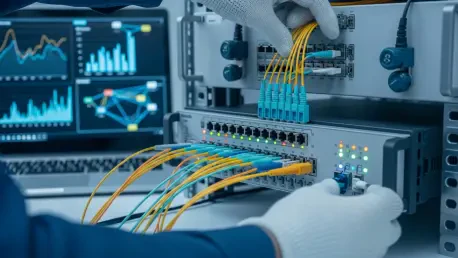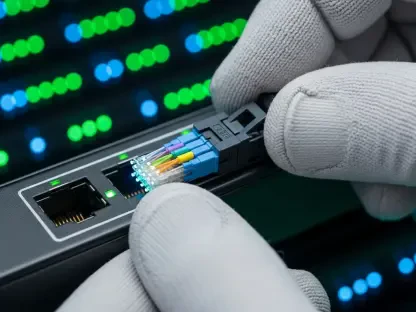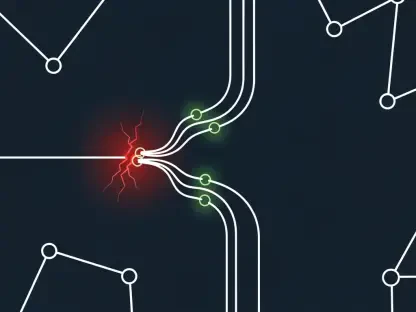In a world where seamless internet connectivity powers everything from remote work to immersive 8K streaming, the backbone of this digital revolution often goes unnoticed—until it falters, leaving millions of users struggling with lag during critical virtual meetings or buffering screens disrupting live global events. The solution lies in the intricate, often invisible, world of fiber technology, where interoperability holds the key to unlocking faster, more reliable broadband. A recent event hosted by the Broadband Forum, known as Plugfest, brought this challenge into sharp focus, gathering industry titans at the University of New Hampshire Interoperability Labs (UNH-IOL) to test the future of fiber networks. What unfolded there could redefine how connectivity shapes daily life.
The significance of Plugfest cannot be overstated. With record-breaking participation from leading vendors, this event served as a crucible for testing advanced Passive Optical Network (PON) technologies like 50G PON and 25GS-PON. It addressed a critical industry need: ensuring that diverse systems and devices can work together without hiccups, allowing service providers to scale networks and meet escalating bandwidth demands. As applications like cloud computing and high-definition streaming push infrastructure to its limits, the ability to integrate solutions across multiple vendors becomes not just an advantage, but a necessity for progress in broadband innovation.
Uniting Fiber Pioneers for a Common Goal
At the heart of Plugfest lies a rare convergence of industry giants, with companies such as Nokia, Calix, and Airoha Technology joining forces under one roof. Hosted at UNH-IOL, this event transformed a typical lab setting into a high-stakes arena where the future of internet connectivity was put to the test. Far from a casual gathering, it provided a platform for rigorous collaboration, uniting competitors to tackle shared challenges in fiber technology.
The sheer scale of participation underscored the urgency of the mission. Vendors brought an array of equipment—optical line terminals (OLTs), residential gateways, and cutting-edge chipsets—to ensure their solutions could operate within diverse ecosystems. This collective effort highlighted a shared recognition that no single company can dominate the connectivity landscape alone; success hinges on seamless integration across varied systems and technologies.
What sets this gathering apart is its focus on immediate, tangible outcomes. With on-site experts facilitating real-time problem-solving, participants could address compatibility issues as they arose, fostering an environment of rapid innovation. This dynamic setup not only accelerated the testing process but also built trust among vendors, proving that collaboration can drive breakthroughs in an otherwise competitive field.
The Critical Role of Interoperability in Broadband Evolution
As digital demands skyrocket, the need for robust broadband infrastructure has reached unprecedented levels. Modern applications, from 8K video streaming to real-time cloud computing, require ultra-high bandwidth and minimal latency—standards that legacy systems often struggle to meet. Interoperability in PON technologies emerges as the linchpin, ensuring that service providers can adopt new solutions without being tethered to a single vendor’s ecosystem.
This flexibility is vital for scaling networks to handle future challenges. Technologies such as 25GS-PON and 50G PON are designed to support massive data loads, addressing the connectivity struggles faced by millions globally. Without interoperable systems, however, the risk of fragmented networks looms large, potentially stalling innovation and leaving end-users with inconsistent service quality.
The stakes extend beyond technical specifications to real-world impact. For service providers, the ability to mix and match equipment from various vendors translates to cost efficiency and faster deployment of next-gen services. This adaptability ensures that rural communities and urban centers alike can access cutting-edge broadband, narrowing the digital divide and empowering more people with reliable internet access.
A Deep Dive into Plugfest’s Testing Ground
Plugfest offered an unparalleled look into the mechanics of fiber interoperability, with major players rigorously evaluating their technologies side by side. The event zeroed in on advanced PON systems, testing compatibility across 50G PON, 25GS-PON, and XGS-PON frameworks. Every component, from optical network units (ONUs) to software stacks, underwent scrutiny to ensure cohesive performance in multi-vendor setups.
Collaboration took center stage as diverse ecosystems were pushed to their limits. Participants, including companies like Sagemcom and Hitron Technologies Inc., integrated their tools with test and measurement solutions to simulate real-world network conditions. This hands-on approach revealed strengths and weaknesses in systems, providing critical data to refine technologies before they reach the market.
One of the standout aspects was the presence of PON specialists who tackled integration hurdles on the spot. Their expertise turned potential setbacks into learning opportunities, ensuring that issues like signal mismatches or protocol conflicts were resolved swiftly. The event’s record turnout further amplified its impact, signaling a unified industry commitment to building scalable, high-performance broadband solutions for global deployment.
Industry Titans Speak on Plugfest’s Impact
The value of Plugfest resonates through the insights of key figures shaping the broadband landscape. Broadband Forum CEO Craig Thomas highlighted the importance of strict compliance checks, noting that such events are essential for validating network reliability under diverse conditions. His perspective underscores how these gatherings prevent costly deployment failures by catching issues early in the development cycle.
Technical Chair Lincoln Lavoie echoed this sentiment, emphasizing the irreplaceable benefits of face-to-face collaboration. According to Lavoie, direct interaction among vendors fosters a deeper understanding of integration challenges, paving the way for more robust solutions. His comments reflect a broader consensus that in-person testing environments like Plugfest are indispensable for maintaining high standards in fiber technology.
The optimism surrounding the event is palpable in the outcomes achieved by participants. Companies such as Evolution Digital and MT2 demonstrated successful interoperability of their devices, proving that cohesive systems are not just theoretical but achievable. These results fuel confidence within the industry, signaling that collaborative efforts can indeed meet the soaring demands of modern connectivity with innovative, reliable solutions.
Turning Plugfest Lessons into Actionable Strategies
The insights gained from Plugfest provide a roadmap for service providers and vendors aiming to stay ahead in the fast-evolving broadband arena. One key takeaway is the value of adopting collaborative testing models similar to this event. Engaging in such initiatives allows stakeholders to validate equipment across multi-vendor environments, reducing the risk of compatibility issues during large-scale rollouts.
Another critical strategy involves prioritizing scalability in network design. By leveraging interoperable PON systems, providers can build infrastructures capable of evolving with emerging technologies like 50G PON. This forward-thinking approach ensures networks remain adaptable, ready to support bandwidth-intensive applications as user needs grow over time.
Finally, staying proactive is essential for meeting future demand curves. Insights from Plugfest encourage investment in compatible, high-speed fiber systems to prepare for trends like immersive gaming or smart city integrations. With another Plugfest scheduled for February 2026 at LANPARK, the industry has a clear opportunity to build on this foundation, ensuring that lessons learned translate into real-world advancements for connectivity worldwide.
Looking back, Plugfest stood as a defining moment in the journey toward next-gen fiber networks. The event not only showcased the power of collaboration but also validated the interoperability of critical systems through the efforts of diverse vendors. Its success laid a strong groundwork for addressing escalating connectivity needs. Moving forward, stakeholders must commit to ongoing testing and innovation, using platforms like these to refine technologies. Embracing such initiatives will ensure that broadband infrastructure keeps pace with digital transformation, delivering reliable, high-speed internet to users everywhere.









